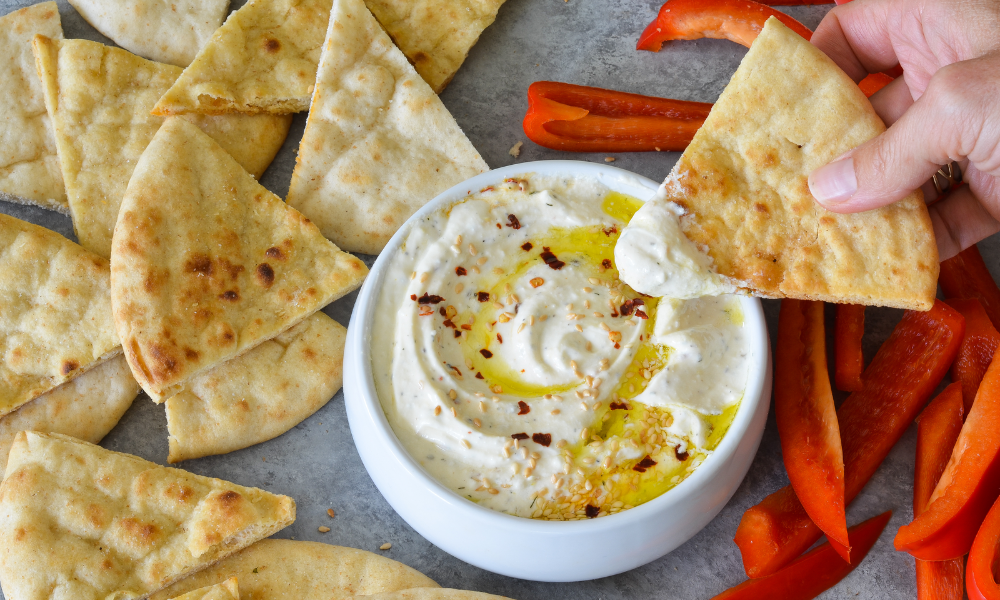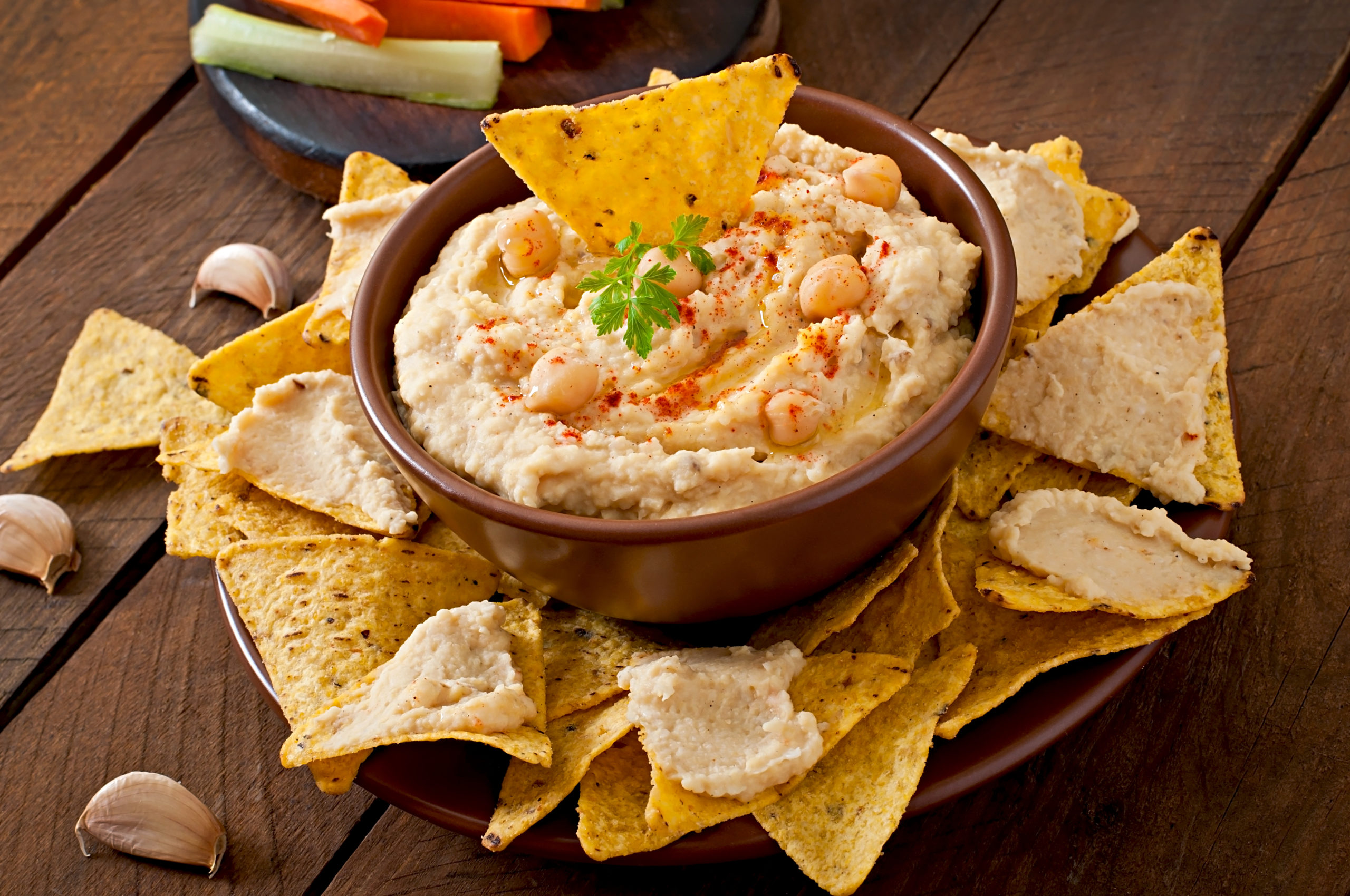Making pita chips is a fun and easy way to enjoy a delicious snack at home. These crispy chips are made from pita bread, a versatile Middle Eastern staple that can be transformed into various tasty treats. If you’re looking for a healthy snack or a tasty addition to your favorite dips and spreads, pita chips are the perfect solution.
This article will guide you through making pita chips, including tips on getting the ideal texture and flavor. Get ready to discover a new favorite snack that’s both easy to make and incredibly satisfying.
How to Make Pita Chips?
Homemade pita chips are an easy and delectable way to enjoy a crunchy snack that can be tailored to your taste. Middle Eastern cuisine’s go-to component, pita bread, is flexible and can be made into various foods, including chips. You may season your handmade pita chips however you desire using this recipe to make the nicest, most crispy chips. Keep them on hand to serve with your favorite dips and salsas as appetizers or snacks.
Ingredients:
- Pita bread (whole wheat or white)
- Cooking spray or oil
- Salt
- Spices of your choice (optional)
Instructions:
- Preheat your oven to 350°F.
- Cut the pita bread into eight wedges or triangles.
- Pita wedges should be arranged on a baking pan covered with a silicone mat or parchment paper.
- Lightly coat the pita wedges with cooking spray or brush with oil.
- Sprinkle salt and any additional spices over the pita wedges, if desired.
- Bake the pita chips for 8-12 minutes or until golden brown and crispy.
- Remove the pita chips from the oven and let them cool for a few minutes.
Here are Some Additional Tips to Help You Make the Perfect Pita Chips:
- Use fresh pita bread: Fresh pita bread is essential for making crispy pita chips. If the pita bread is stale or has been sitting on the counter for some days, the chips won’t come out as crispy.
- Cut the pita bread evenly: Cutting the pita bread evenly will ensure that all of the chips bake evenly and have the same texture.
- Use a light hand with the oil: Too much fat can make the pita chips greasy and heavy. Use a soft hand with the cooking spray or oil, just enough to lightly coat the pita wedges.
- Don’t overcrowd the baking sheet: Overcrowding the baking sheet can lead to soggy pita chips. Make sure to space the pita wedges evenly on the baking sheet to allow for proper air circulation.
- Keep an eye on the oven: Pita chips can go from perfectly crisp to burnt fastly, so it’s crucial to keep an eye on them while baking.
- Let the chips cool: Letting the pita chips cool for a few minutes before serving will allow them to crisp up and maintain their texture. By following these tips, you’ll be on your way to making the perfect pita chips every time.
Which Type of Pita is Ideal for Pita Chips?
You can choose any variety of pita you want to use. I prefer pocket pitas that can be cut in half at the seam, so I have a smaller layer to deal with. However, you can use thick pitas, crackers, or even naan to produce thicker chips with more substance to hold up to your dips. Adjust the cooking time to ensure they receive adequate color and crispness.
Which is Healthier, Pita Chips Vs. Tortilla Chips?
To determine which chip is healthier, it’s important to consider the specific brand and ingredient list. For a healthier option, look for chips made with whole grain pita or tortillas and baked rather than fried.
Additionally, check the label for the amount of sodium, sugar, and saturated fat per serving. Neither is inherently healthier than the other when comparing pita and tortilla chips. Pita chips are made from thin slices of pita bread seasoned and baked or fried.
The nutritional value of these chips depends on various factors, such as the ingredients used, the type of oil used for frying, and the portion size. They are often lower in calories and fat than traditional chips but can be high in sodium.
On the other hand, tortilla chips are made from corn or flour tortillas that are cut into triangles and fried or baked. Tortilla chips are often high in calories and fat, but they are also a great source of fiber and contain essential vitamins and minerals.
When consumed in moderation and created with wholesome ingredients, tortilla chips, and pita can benefit a diet. To make the most practical choice, it’s essential to carefully read the label and choose options that are lower in unhealthy fats, sodium, and sugar.
How to Serve Pita Chips?
Pita chips are versatile snacks that can be enjoyed in many different ways. Here are some serving suggestions to help you get the most out of your homemade pita chips:
- Dips and spreads: Pita chips are the perfect vehicle for scooping up dips and spreads, such as hummus, tzatziki, guacamole, or salsa.
- Salads: Crumble pita chips over salads for added crunch and flavor.
- Snack mix: Mix pita chips with nuts, dried fruit, and other snacks to create a tasty and healthy snack mix.
- Soups and stews: Crumble pita chips over soups and stews for added texture and flavor.
- Cheesy chips: Sprinkle shredded cheese over the pita chips before baking for a delicious and savory snack.
- Sweet chips: Sprinkle cinnamon and sugar over the pita chips before baking for a sweet and crunchy snack.
- Party platters: Pita chips are a great addition to party platters and can be served alongside other snacks and finger foods.
No matter how you enjoy your pita chips, they will surely be a hit with friends and family. So experiment with different flavors and serving suggestions to find your favorite way to enjoy this delicious snack.
How Should Homemade Pita Chips be Stored?
To maintain their freshness and crispness, homemade pita chips should be placed in an airtight container. Here are the steps for properly storing pita chips:
- Allow the chips to cool completely: Once the pita chips have been baked, let them cool to room temperature before storing them.
- Transfer to an airtight container: Place the chips in a sealed plastic or resealable bag. This will keep them from becoming stale or absorbing moisture from the air.
- Store in a dry place: Keep the container of pita chips in a dry place away from heat and humidity, such as a pantry or cupboard.
- Consume within a few days: For best results, consume the pita chips within a few days of baking. To get them crisp again if they go soggy or soft, warm them for a few minutes in a 350°F oven.
Following these steps, you can keep your homemade pita chips fresh and enjoyable.
Are Pita Chips Gluten-Free?
Pita chips can either be gluten-free or contain gluten, depending on the ingredients used. The pita chips contain gluten if the elements include wheat flour, barley, or rye. To determine if pita chips are gluten-free, it is necessary to check the product’s label and ingredients list.
To ensure the pita chips are gluten-free, it is recommended to look for products certified gluten-free by a reliable organization. However, they can be considered gluten-free if the chips are made with alternative gluten-free grains such as corn, rice, or quinoa. It is important to note that cross-contamination can occur during the manufacturing process, so those with severe gluten sensitivities may need to avoid pita chips altogether.
Reference: COMPARISON AMONG GLUTEN, MALTODEXTRIN, AND SOYBEAN OIL COATINGS AS FLAVOR CARRIERS ON PITA CHIPS
Consumers’ concerns about their diets have led producers to create snacks with lower fat content. As a vehicle for cheese powder on pita chips, soybean oil was contrasted with gluten and maltodextrin coatings. Maltodextrin and gluten coatings may be used instead of oil as flavor carriers in snack items with lower fat content.
Are Pita Chips Healthy for Us?
Pita chips can be a healthy snack option for those looking for a crunchy, low-fat alternative to traditional chips made from potatoes. They are made from pita bread, a Middle Eastern flatbread made from simple ingredients like flour, water, and yeast. When baked, the pita bread becomes crispy and cut into chips.
Because they are made from a simple and wholesome ingredient, they are often lower in calories, fat, and sodium than regular chips. However, the nutritional value of pita chips can vary depending on the specific brand and any added ingredients.
Some pita chips may contain added oils, flavorings, and preservatives, adding extra calories, fat, and sodium to the snack. It’s important to read the labels and choose pita chips with minimal added ingredients to ensure they are as healthy as possible.
Lastly, pita chips can be a healthy snack made from simple, wholesome ingredients when consumed in moderation. To maximize their health benefits, choose pita chips with minimal added ingredients and look for lower calories, fat, and sodium brands.
Conclusion
In conclusion, making pita chips at home is a quick, easy, and cost-effective way to enjoy a crispy snack. Pita chips are a terrific choice if you’re searching for a nutritious snack or a flavorful addition to your preferred dips and spreads. You can create delicious and healthy chips tailored to your tastes and dietary needs with just a few simple ingredients. An excellent substitute for typical nachos is pita chips.
They are a fantastic, healthier alternative to traditional chips. Whether you prefer them seasoned with spices or herbs or brushed with olive oil, pita chips are a versatile snack that can be liked as an appetizer, a side dish, or a satisfying snack. So, give this recipe a try and enjoy a crunchy, tasty, and healthier alternative to store-bought chips.

